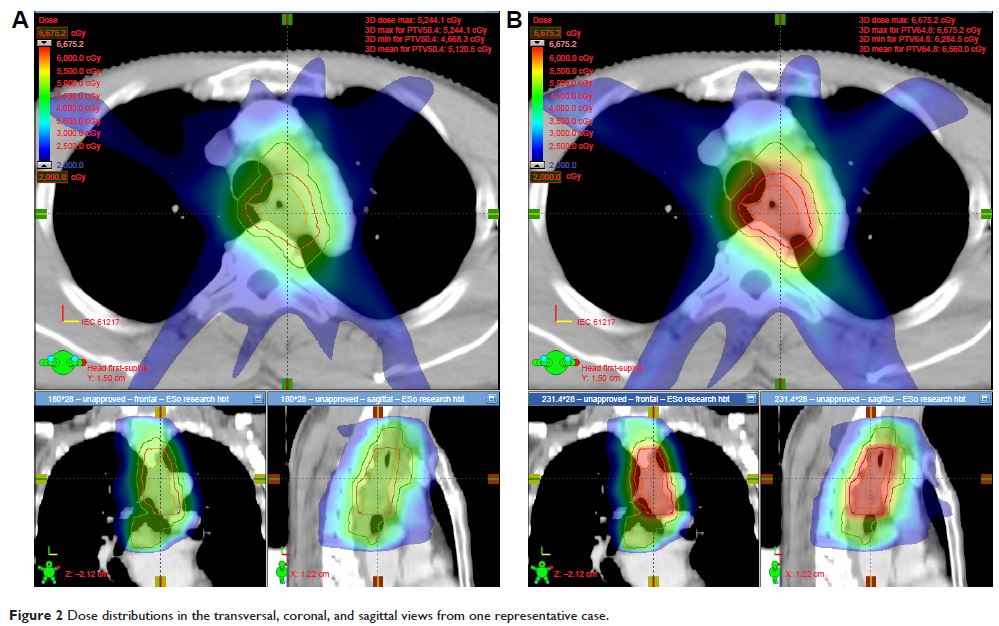9 0 5 7 8
论文已发表
注册即可获取德孚的最新动态
IF 收录期刊
- 2.6 Breast Cancer (Dove Med Press)
- 3.9 Clin Epidemiol
- 3.3 Cancer Manag Res
- 3.9 Infect Drug Resist
- 3.6 Clin Interv Aging
- 4.8 Drug Des Dev Ther
- 2.8 Int J Chronic Obstr
- 8.0 Int J Nanomed
- 2.3 Int J Women's Health
- 3.2 Neuropsych Dis Treat
- 4.0 OncoTargets Ther
- 2.2 Patient Prefer Adher
- 2.8 Ther Clin Risk Manag
- 2.7 J Pain Res
- 3.3 Diabet Metab Synd Ob
- 4.3 Psychol Res Behav Ma
- 3.4 Nat Sci Sleep
- 1.9 Pharmgenomics Pers Med
- 3.5 Risk Manag Healthc Policy
- 4.5 J Inflamm Res
- 2.3 Int J Gen Med
- 4.1 J Hepatocell Carcinoma
- 3.2 J Asthma Allergy
- 2.3 Clin Cosmet Investig Dermatol
- 3.3 J Multidiscip Healthc

上胸部食管癌患者同时进行剂量升高与非升级强度调制放射治疗的放射生物学评估
Authors Huang BT, Wu LL, Guo LJ, Xu LY, Huang RH, Lin PX, Chen JZ, Li DR, Chen CZ
Received 14 January 2017
Accepted for publication 25 March 2017
Published 19 April 2017 Volume 2017:10 Pages 2209—2217
DOI https://doi.org/10.2147/OTT.S132388
Checked for plagiarism Yes
Review by Single-blind
Peer reviewers approved by Dr Amy Norman
Peer reviewer comments 4
Editor who approved publication: Dr Carlos Vigil Gonzales
Objective: To compare the radiobiological response between simultaneously
dose-escalated and non-escalated intensity-modulated radiation therapy (DE-IMRT
and NE-IMRT) for patients with upper thoracic esophageal cancer (UTEC) using
radiobiological evaluation.
Methods: Computed tomography simulation data sets for 25 patients pathologically
diagnosed with primary UTEC were used in this study. DE-IMRT plan with an
escalated dose of 64.8 Gy/28 fractions to the gross tumor volume (GTV) and
involved lymph nodes from 25 patients pathologically diagnosed with primary
UTEC, was compared to an NE-IMRT plan of 50.4 Gy/28 fractions. Dose-volume
metrics, tumor control probability (TCP), and normal tissue complication
probability for the lung and spinal cord were compared. In addition, the risk
of acute esophageal toxicity (AET) and late esophageal toxicity (LET) were also
analyzed.
Results: Compared with NE-IMRT plan, we found the DE-IMRT plan resulted in a 14.6
Gy dose escalation to the GTV. The tumor control was predicted to increase by
31.8%, 39.1%, and 40.9% for three independent TCP models. The predicted
incidence of radiation pneumonitis was similar (3.9% versus 3.6%), and the
estimated risk of radiation-induced spinal cord injury was extremely low
(<0.13%) in both groups. Regarding the esophageal toxicities, the estimated
grade ≥2 and grade ≥3 AET predicted by the Kwint model were increased by
2.5% and 3.8%. Grade ≥2 AET predicted using the Wijsman model was
increased by 14.9%. The predicted incidence of LET was low (<0.51%) in both
groups.
Conclusion: Radiobiological evaluation reveals that the DE-IMRT dosing strategy is
feasible for patients with UTEC, with significant gains in tumor control and
minor or clinically acceptable increases in radiation-induced toxicities.
Keywords: radiobiological evaluation, dose-escalated, non-escalated,
intensity-modulated radiation therapy, esophageal cancer
